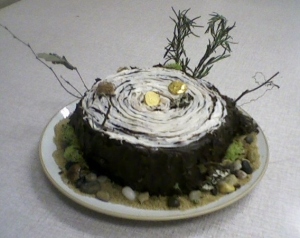Until I started taking a walk at around sunset, I had never given much thought to where the sun sets each day. In the west, of course, but streets are often built along lines other than north/south or east/west, so exactly where due west in my neighborhood lies is I couldn’t say.
After I took a really nice photo of sunset several months ago, however, I started trying to get more photos of sunset. I knew that the time of sunset changes each day, so at first I thought the reason I couldn’t get the same shot again was due to timing. But before long it became clear that the sun was no longer setting behind the same tree (and it was the tree, hiding the brightest part of the setting sun, that had made the picture so good).
Now when I take a walk at sunset, the sun is in quite a different part of the sky. Still to the west, of course, but considerably north of where it was in January. I had not realized there would be that big a difference in where the sun met the horizon.
I suppose I may have learned about this in eighth grade Earth Science – but if I did, the knowledge faded along with how to interpret weather maps and understand how the high and low pressure systems shape our weather. Most of my life, I simply didn’t live somewhere that I could easily get to a point where the horizon was visible, either to the east or west. I enjoyed sunrises and sunsets when I saw them, but by the time the sun got over the surrounding houses and trees, any sense of the point where it rose or set was lost.
Even now that I live in a relatively flat bit of Iowa (though even in my neighborhood, within a one-mile walk the elevation varies from a low of 688 feet to a high of 716 feet, more than I would have expected prior to using MapMyWalk to track my route), I have to walk a couple of blocks to get to an open field to the west. (To see the horizon to the east I’d have to go to the Mississippi, an easy bike road going, but a bit harder coming back uphill from its lower elevation of about 550 feet.) And I never bothered going out there to see the sunset until that day in January, when working from home made it easy to take a walk at sunset.
Even knowing that the tilt of the earth on its axis is responsible for the changes in the temperature as well as how many hours of daylight we get, I’m having trouble getting a picture in my mind of how this moves sunset in January, behind the trees to the south of the open field, to sunset in June behind trees to the north of that field. To help understand it, this article shows how to build a model to track the sun’s movement across the sky at different times of the year. I like making stuff, so I plan on giving this a try.



 Posted by Pauline
Posted by Pauline 
